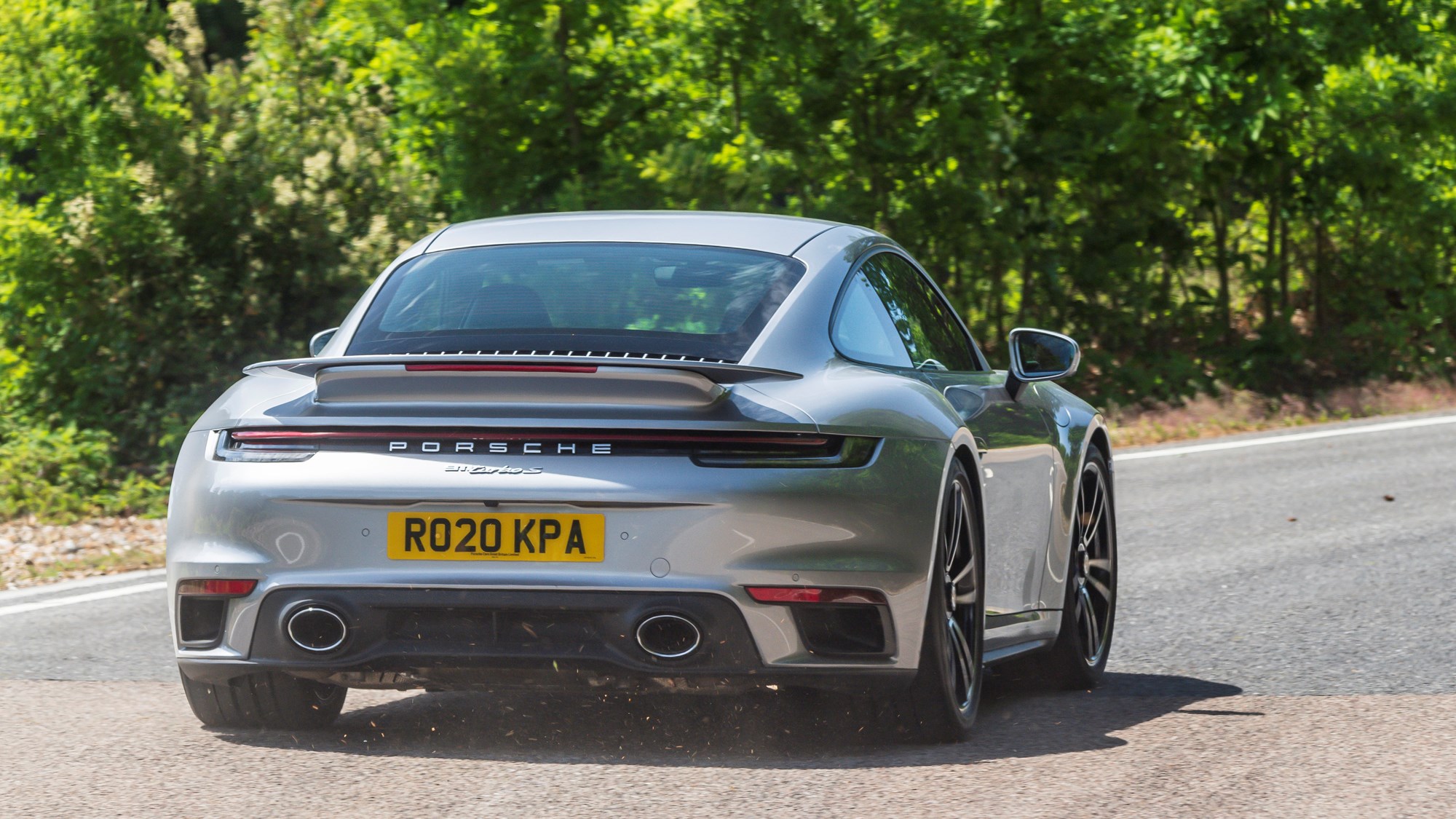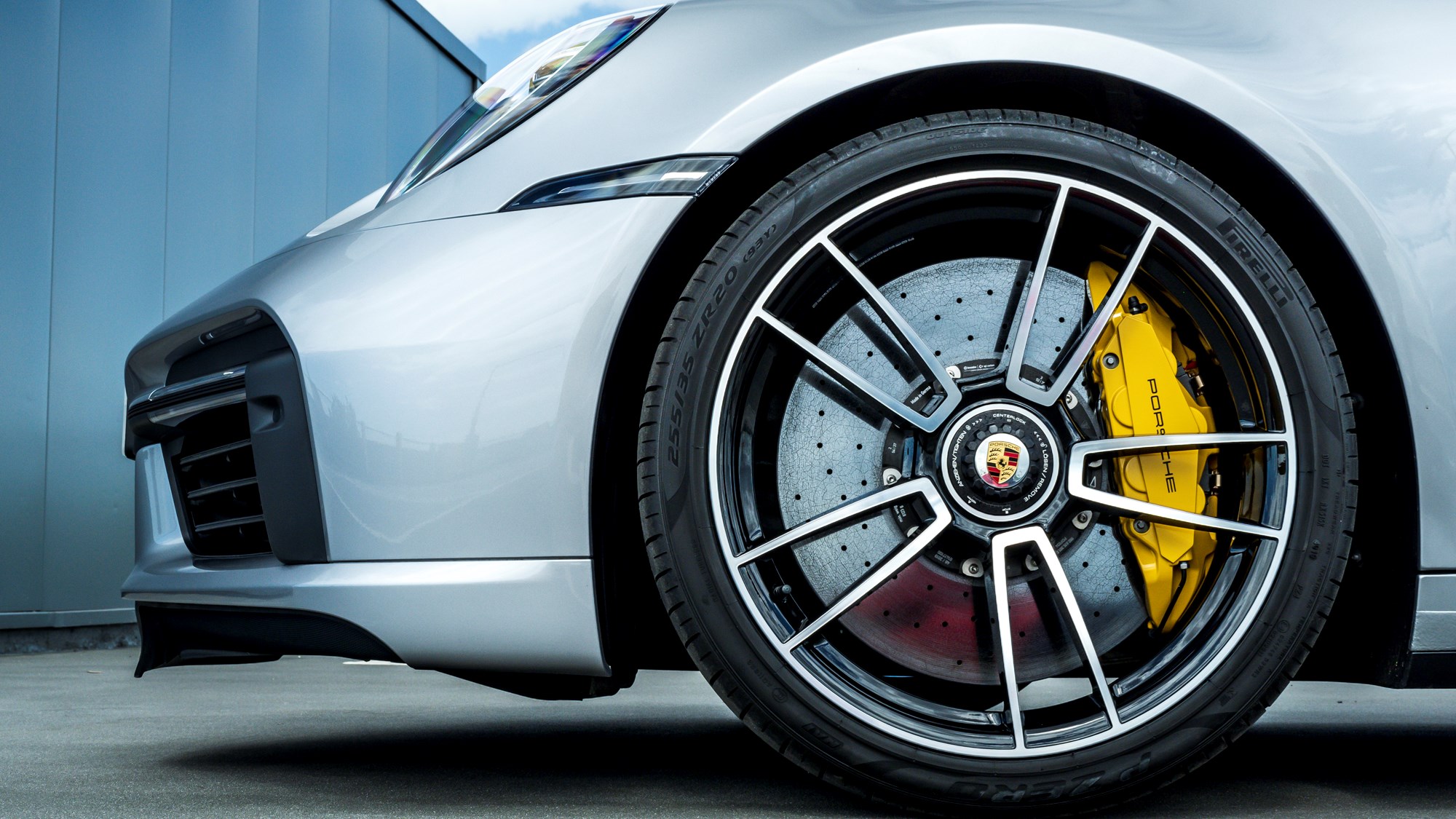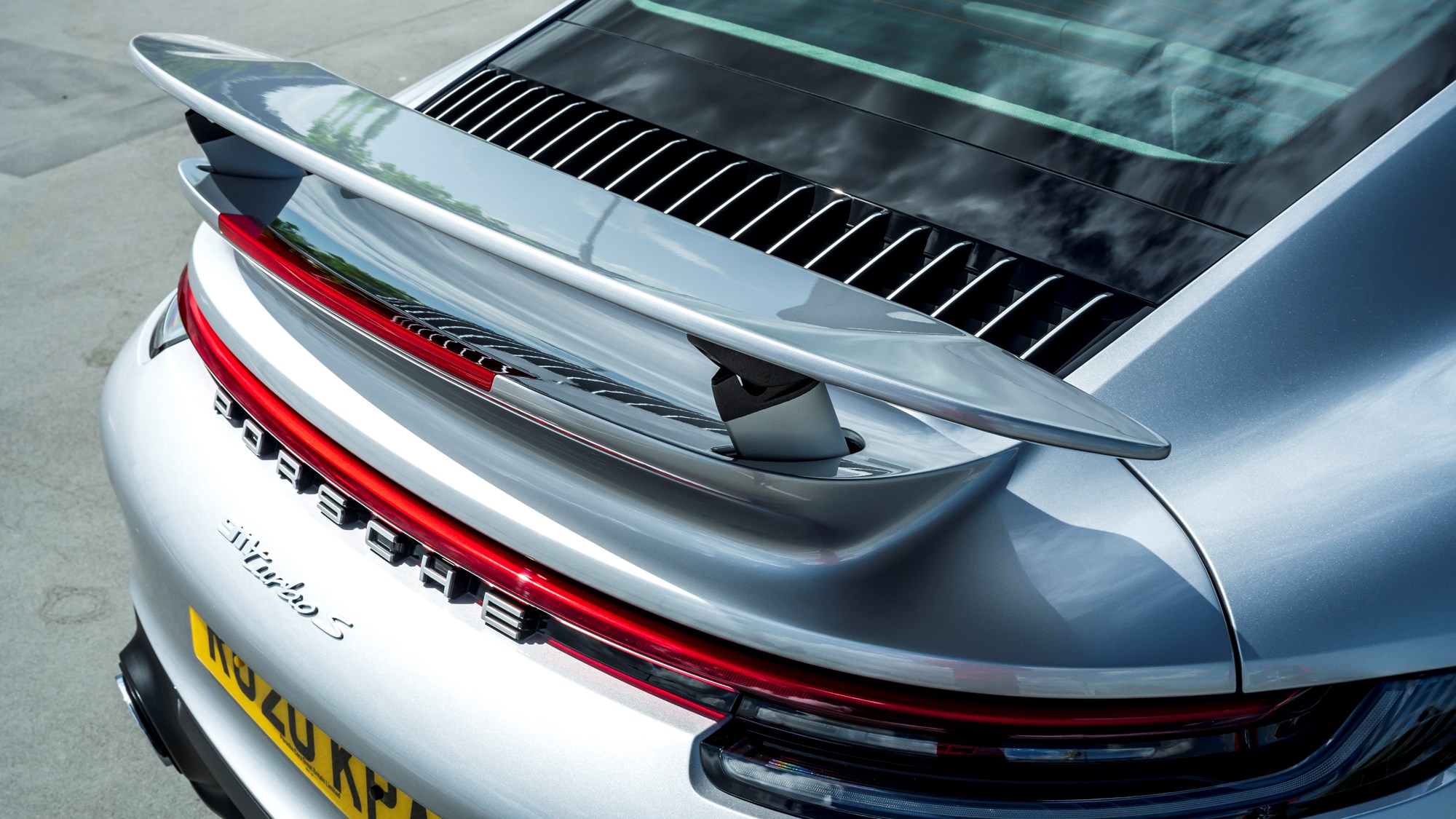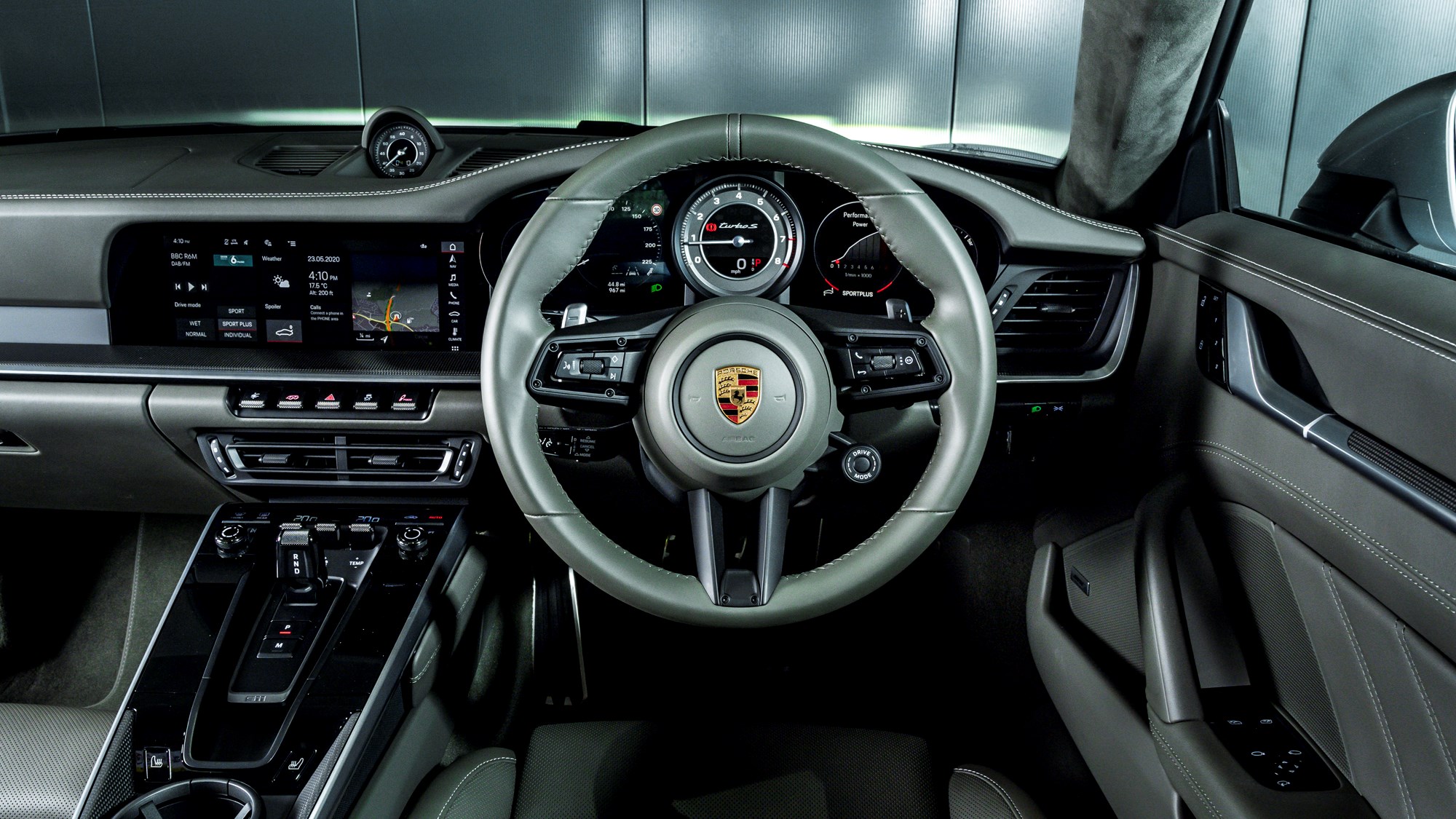► Turbo S driven
► A change in image
► Sharper, faster, better?
It’s a strange time to be a Porsche 911 Turbo S – forced induction is no longer a unique selling point in the range, and its badge has been turned into a byword for top-tier Zuffenhausen performance for everything from fast SUVs to electric saloons.
So answering the fundamental question has never been harder. Just what, or who, is the fully blown 911 for? If it’s a driver-focussed road and track weapon then what’s the GT3? If you want a fast coupe then what’s wrong with the Carrera S?
A bigger problem yet is the Taycan Turbo S – admittedly slower in the 0-62mph sprint but more explosive off the line and immediate on the move. As well as being quieter and more practical.
What’s the point of this one then?
Previous Turbos were aimed at drivers who enjoyed showing off in a prestigious piece of street furniture. The new 992 Turbo S still ticks that street cred box, but beneath the even wider-body skin lurks a totally different animal – raw, aggressive, more tactile, so much faster at the limit.

At a glance, our test car looks like the predictable evolution of a well-established licence to print money. True, the track has been extended once again, this time by 45mm up front and by 20mm in the back, the adaptive wingwork is even more elaborate, the shiny multi-spoke wheels are shod with wider Pirelli P Zero tyres, and the fresh make-up includes matrix headlights as well as four fat rectangular tailpipes, or two big ones with the optional sports exhaust.
Still, it’s the standard Turbo formula, not a radical departure from a proven recipe. Reader, this initial impression is thoroughly misleading. The flagship 992 is not your poser’s supercar anymore. This Turbo can outsprint the Ferrari F8 Tributo, leave the DBS Superleggera trailing in its dust, and give the McLaren 720S a run for quite a bit less money. It´s that good, and in terms of value for money, it plays in a league of its own anyway.
What’s new?
The 991.2 Turbo S was a remarkable piece of kit – superquick in a straight line, entertaining through the twisties, totally forgiving 24/7. But the new 992 Turbo S is just better.
The latest iteration of the quintessential Porsche is hyperquick off the mark, even more involving along the limit of adhesion, challenging as well as rewarding to a still greater degree: The new Turbo pushes out the road-holding envelope by putting quantifiably more rubber on the ground. It scores big points in the handling sweepstakes thanks to the faster rear-wheel steering, quicker damper control and the optional PASM sports suspension.
It comes armed with ten-piston front calipers and larger carbon-ceramic brake discs all-round, to pulverize all stopping distances.

And instead of relying exclusively on the time-warp ASR and DSC software, the new king of any lane is equipped with a comprehensive set of advanced adaptive aerodynamics dubbed PAA. In Sport Plus mode the rear wing raises up and a speed bump clouting chin spoiler deploys beneath the front bumper.
How quick is it?
The top speed is an unchanged 212mph. This is due to a 40kg increase kerb weight to 1640kg (bigger wheels, eight-speed PDK, extra Euro-friendly hardware, additional front axle cooling) and to a more substantial drag resistance which varies between 0.33 in streamlined Eco and 0.38 in total attack Performance mode.
In terms of acceleration, however, the latest iteration of the marque´s brightest icon shaves 0.2sec off the 0-62mph time – now a blistering 2.7sec – while covering the 0-125mph stunt in an even more thrilling 8.9sec – one full second faster than the outgoing model. True, the 700bhp GT2 RS is marginally quicker still as well as 6mph faster overall, but the 650bhp Turbo S beats it in the torque department by 590lb ft against 553lb ft.
It’s mind-bendingly fast, to put it mildly, but in a totally different way to the instant torque deployment of the electric Taycan. The boost really comes on song at just below 3000rpm, meaning a slightly laggy throttle response and a pause while the two turbos spool up to full strength, but you only really notice this when shifting gears manually.
That’s because the 992 Turbo’s now eight-speed PDK does a fine job of managing the car’s thrust, with an even grabbier first gear fully enabled by all-wheel drive, a longer-legged top gear good for an indicated 214mph and a more relaxed fuel-saving final drive ratio.

Although the consumption depends almost entirely on the hooligan inside, the new Turbo S persistently averages less than 14.0mpg, pleasure tax included.
To most owners of this car, a tear-off pad loaded with blank driving licences would come handy, or a vaccine against penalty points. Tet it squashes forward thrust just as comprehensively: an eye-catching pop-up airbrake momentarily darkens the rear-view mirror.
What about corners?
The Turbo S with its wider tyres and all-wheel drive assaults the tarmac when driven quickly. Every corner feels like it’s got some invisible banking on it, so stable is the car’s bodywork and adhesion to the road.
In truth there’s still a little of the aloofness at normal speeds that we’ve come to associate with this model – the feeling of its capability being so stratospherically high that no road driven at the speed limit could pose a problem.
This time around though the Turbo S is more alive further down in its limits, so you don’t have to push quite as hard to be rewarded with a sense of driver involvement. At the same time, it handles motorways and regular driving with such alacrity that you could conceivably run one as a daily without ever scratching its true potential.
What’s else?
What is there not to like about this Porsche, you ask. For start, the price has gone up. Furthermore, electrification, head-up display and advanced driver assistance are obviously still alien terms to the 992 engineers. Even when fitted with the extra-cost sports exhaust, the engine isn’t the concerto you’d hope, and there’s other problems, too; the lowered PASM Sport suspension systematically crushes the low-speed ride.
This is our biggest complaint on UK roads – around town it’s borderline uncomfortable on anything but the smoothest of surfaces, which kind of erodes the every day supercar image, and saw us reaching for the PDCC toggle to return the chassis to a more compliant mode quicker than the car can get to 62mph.
And then there’s its performance in anything other than sunshine: let it rain and this Porsche duly delivers the full horoscope from early aquaplaning to momentarily questionable lane-changing grip. Elsewhere, mod cons such as the electric pop-out door handles and the busy touchscreen are a debatable interpretation of progress.
Like all Porsches, the 992 Turbo S offers that frustrating yawn-a-mile Eco mode which activates start-stop below 10mph and selects the tallest possible gear at any given time. At the other end of the excitement scale, there is Sport Plus which does in combination with the Performance aero setting pull out all the stops.

Upshifts are delayed and delayed further still, downshifts strike early like unexpected lightning on a hazy day. The rear air rudder assumes a flatter stance at about 95mph before switching to a fully horizontal profile above 110mph, and the dampers firm up like four shaken champagne bottle close to popping their corks
Verdict
You’d think driver enjoyment would increase exponentially along with a rise in grip and power, but the 911 Turbo S has previously shown us that the result is a car that makes it all a bit too easy, and is overlooked for the GT3 RS by those wanting the ultimate driver’s 911. This is Top Trumps on wheels.
The value then of ramping up the raw, spicy edge of this car like Porsche has done in the 992 is debatable – if people didn’t buy this model for that aspect last time around, why would they want it now?
Simply put this model is more rounded than ever. At nine tenths, the driver can do almost no wrong, but the last step towards total satisfaction is a dare for man and machine, in exactly this order. No 911 has ever been as disarmingly multi-talented as this Turbo S.
Those looking for a more focussed drive are still better served elsewhere, but if the sensation of bottomless speed and stability appeals, look no further.